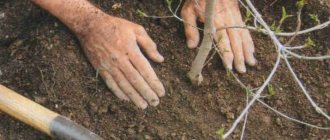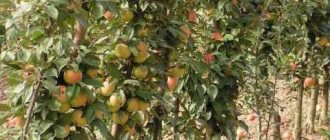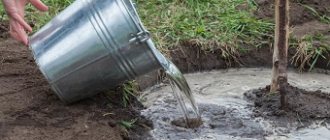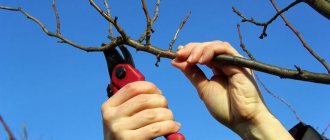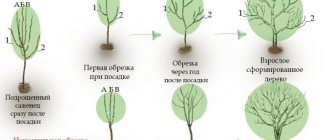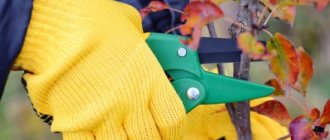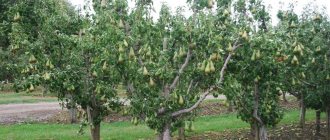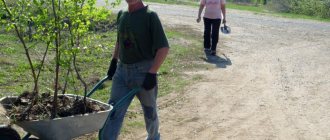Until recently, pear was considered the second most popular seed crop in amateur gardening. The first place was traditionally occupied by the apple tree. However, in recent years, many gardeners have argued that the pear is both tastier and healthier, and it produces harvests every year, which cannot be said about the apple tree.
Until the 80s of the last century, the main plantings of pears were concentrated in the southern regions of Russia due to the low frost resistance of local varieties. In the central and northern regions, pear trees grew with medium-sized, thick-skinned, hard fruits, inferior in taste to sweet and juicy apples.
However, in subsequent years the picture changed dramatically. Domestic breeders have made a breakthrough in creating a stunning assortment of thin-skinned, sweet and aromatic varieties of frost-resistant pears with tender, melting flesh.
The taste of their fruits is in no way inferior to those of the south, and in terms of vitality they are several times superior to them. These varieties tolerate cold winters well with temperatures down to -42 degrees. They practically do not get sick and are much less likely to be damaged by pests.
In this article we will talk about planting the northern pear and the features of caring for it.
When is it better to plant a pear - in spring or autumn?
Many novice gardeners who have little experience in growing fruit crops are often interested in when is the best time to plant a pear - in spring or autumn? The first and second options are possible. Due to weather and climatic conditions, planting crops in the fall is best done in the southern, warm regions. But the spring procedure is better left for the Middle Zone (Moscow region), Siberia, and the Urals.
The advantage of the spring procedure is that the seedling has enough time to take root before the winter cold.
An undoubted advantage of autumn planting is the ability of the seedling to harden over the winter, strengthen, in order to be ready for any influences from the outside world in the future.
Optimal timing for planting pears in spring and autumn
So, when is it better to plant this crop in open ground, in what month?
Dates for planting pears in the spring : when the air temperature begins to remain stably above 5 degrees Celsius, but before the buds swell, approximately the end of March and April. Times may vary by region:
- in the South (Krasnodar Territory (Kuban), North Caucasus) - end of March;
- in the middle zone (Moscow region) - at the end of April;
- in Siberia, the Urals, Leningrad region - the optimal time is at the beginning of May.
Planting dates in autumn : daytime temperature should be about 15 degrees Celsius, and night temperature about 5, about 3-4 weeks should remain before the onset of the first frost. Just like with the spring procedure, with the autumn procedure the time differs in different regions:
- in the South (Krasnodar Territory (Kuban), Northern Caucasus) - from the beginning to the end of October;
- in the middle zone (Moscow region) - from the end of September to the end of the first half of October;
- in Siberia, the Urals, Leningrad region - from the beginning to the end of September.
In what year does the tree bear fruit after planting? The tree begins to bear fruit after 5-7 years, depending on the variety
Unfavorable neighbors for culture
The compatibility of fruit crops has been known for a long time. If you choose an unfavorable neighbor, he will oppress and negatively affect the fruiting of another tree. And if you plant neutral neighbors nearby, then their cultivation and fruiting will be successful.
You should not plant a pear with:
- plum;
- cherry plum;
- cherries;
- viburnum;
- apricot;
- barberry;
- lilac.
Aftercare
Pears planted in the fall in the Moscow region do not need fertilizing. Water the seedlings only when necessary. And not at the root, but in a groove dug around the trunk.
For the winter, the root circle is mulched with a layer of 8-10 cm. As a rule, a mixture of peat and sawdust or pine needles is used. As snow falls, they make additional shelter from it. In the first years, it is important to protect the pear from rodent attacks. To do this, the trunk is wrapped with spruce branches, burlap or plastic mesh. Shelters are made as high as possible. In addition to mice, hares and roe deer also like to eat young pear bark.
Preparatory steps before planting a pear
For proper and successful planting, it is important not only to follow the plan, but also to properly prepare for the event. Below you will find information about the rules for choosing a seedling, location, pit preparation and planting material.
How to choose a seedling
A low-quality seedling reduces the chances of successful establishment and normal growth and fruiting. Therefore, the purchase of planting material must be treated carefully and responsibly. The following recommendations and rules will help you choose a good and high-quality pear seedling:
- The bark is smooth, healthy, its integrity is not damaged.
- The root system is elastic, undamaged, and has no rotten or dry roots.
- The grafting site should be visible and free of damage, wounds and peeling of the bark. It should have a slight bend.
- It is recommended to buy annual seedlings, as they have the highest survival rate.
- A 1-year-old seedling can be either unbranched or branched. If it is unbranched (in this case, we can say without a doubt that this is an annual specimen), then its height is about 1.2 meters, the trunk diameter is about 1 centimeter. If branched, then the seedling has one or two shoots, no more than 12 centimeters long, and the trunk width is slightly more than one centimeter.
- You can plant a two-year-old shoot, but the roots of the plant at this age are already quite large. The trunk diameter of a 2-year-old seedling is approximately 1.5 centimeters or a little more, there are two or three shoots, at least 20 centimeters long.
Important! It is necessary to choose zoned varieties that are suitable for your climate. Be sure to check whether the pear variety is suitable for growing specifically in your region.
It is best to buy material in specialized stores or nurseries that are trusted and have a good reputation. Purchasing a product at random points of sale or on the market may result in the purchase of a bad specimen, which, even if it takes root, will grow weakly and frailly.
Video: how to choose the right seedling.
How to choose a landing site
The pear, like any other fruit tree, has its own preferences regarding its place in the garden. The choice of plot in the garden will determine how comfortable the crop will be to grow and, therefore, to bear fruit.
The following tips and recommendations will help you choose the right place to plant a pear seedling:
- The culture loves sunny places, but they should not be too open.
- The site must be protected from winds, both from the north, cold, and dry and hot.
- Groundwater must be at a depth of at least two meters.
- If there is a hill in the garden, it is better to plant it there.
- It is not recommended to plant the crop close to buildings or fences.
How to choose and prepare the soil
The best option for pears is loamy or clay soil. In this case, the soil must have normal moisture permeability and a supply of necessary elements and substances to nourish the plant. The culture does not like excessively heavy clay or too light sandy poor soils.
Not every garden plot has soil that ideally matches the conditions required by the crop. But you can improve the soil if, according to the rules, you prepare the soil before the procedure:
- If the site has too dense and chernozem soil sand or perlite to it .
- If you have heavy clay soil , then you should loosen it with a shovel and crowbar , and put a drainage layer on top (about 10 centimeters) and mix it a little with the loosened soil.
- And if the soil in your garden can be described as poor or clayey , then the solution to the problem is to add humus, black soil, and peat . It wouldn't hurt to add a small amount of wood ash .
How to plant trees at what distance
An adult tree of this crop is large in size and has a spreading, wide crown. The size of the tree dictates certain requirements in terms of placement of trees in the garden.
The distance between pears when planting should be determined depending on the type of tree. Between trees of different varieties, a gap should be maintained in the garden according to the following scheme:
- For low-growing varieties : the distance between seedlings is 3.5-4 meters, between rows - 5 meters.
- For medium-sized plants : between seedlings - 4 meters, between rows - 6 meters.
- For tall people : in the first case - 5 meters, and in the second - 7.
- For columnar pears : the gap between seedlings is 50 centimeters, and the distance between rows is 1.2 m.
When choosing a location, be sure to take into account the parameters of an adult tree. Trees must not be allowed to interfere with each other in the future. Only slight contact between crowns is allowed. When planting, it is recommended to maintain a distance between the pear and a tree of another crop - at least 5-6 meters.
How to prepare a planting hole
The pit must be prepared in advance. If the procedure is carried out in the spring, then it needs to be prepared in the fall before the first frost. When planting in autumn, preparatory measures must be taken 3 weeks before the actual event.
The preparation of the planting pit is carried out according to the following scheme:
- You should dig up the selected place, and you need to apply fertilizer. Per square meter add 10 grams of potassium sulfate, 5 kilograms of humus, 35 grams of superphosphate. For soil that is highly acidic, it is also recommended to add per sq.m. a tablespoon of wood ash.
- When digging, you need to remove weed rhizomes from the soil and level the area.
- Then you need to dig a hole, its depth is 1 meter, width is 0.8 meters. Don't forget to put the fertile top layer in a separate pile.
- Loosen the bottom with a shovel or fork.
- Now you can add fertilizer to the hole. To do this, mix the top fertile layer of soil with 150 grams of wood ash, 50 grams of nitrophoska, 2 kilograms of humus. You need to fill the hole two-thirds with the mixture.
- You need to drive a support peg into the hole.
Seedling preparation
If you purchased a plant with an open root system, then before autumn or spring planting it is necessary to prepare the pear seedling. First, carefully examine the root system. If you find that some roots have rotted, dried out or broken, then they need to be cut back to a healthy white place.
Regardless of whether there are damaged roots or not, it is recommended to trim the roots by 10-12 centimeters. And then soak the roots of the plant in water for 1-2 hours. If there are leaves, it is better to remove them.
Seedling preparation
It is not recommended to immediately plant a purchased seedling in the garden. He must undergo preliminary training. It must be carefully examined; rotted or broken areas of the roots must be cut off.
Root pruning
If upon final inspection it turns out that the roots are absolutely healthy, it is still advisable to trim them by 10-12 cm.
Trimming the above-ground part
There are conflicting opinions regarding pruning autumn seedlings:
- One group of scientists argues that this should not be done, since the plant spends too much energy on healing the resulting wounds; the plant may not have enough strength to successfully overwinter.
- Another group of farmers claims that pruning the vegetative part of a one-year-old seedling stimulates the development of roots.
Each gardener must make his own decision: to trim the top of the seedling or not.
Soaking the roots
For better survival of the pear, it is recommended to immerse the roots in a container of water a day before the planting procedure. You can add 8-10 drops of Kornevin to the water.
Direct planting of pears in open ground
The following step-by-step instructions will help you plant a pear seedling correctly in spring or autumn:
- Sprinkle some regular soil over the fertilizer in the hole to form a mound.
- Place the seedling in the hole, carefully straighten the roots. It is necessary that the grafting site faces south.
- After this, you need to fill the hole with soil; it is recommended to shake the seedling slightly to avoid voids near the root system. The root collar should rise 3-5 centimeters above the ground surface.
- Lightly compact the soil and form a circle around the trunk.
- Now you should water abundantly (2-3 buckets per seedling) and after the water is absorbed into the soil, mulch.
Note! Planting a seedling with a closed root system in spring and autumn follows the same scheme, only after applying fertilizer there is no need to make a mound of soil.
Video: features of planting a seedling with a closed root system.
Common diseases
Different types of pears have different resistance to diseases. The most common diseases for trees are:
- scab;
- fruit rot or moniliosis;
- powdery mildew;
- leaf rust;
- black cancer;
- bacterial burn;
- cytosporosis
Without timely treatment, a significant part of the tree suffers; in severe cases, the plant dies. To prevent this from happening, it is necessary to carry out timely disease prevention. Trees are treated with protective solutions several times a year, pruning and crown formation are carried out, and the soil above the pear root system is periodically cleared of weeds.
What to do with a young tree after planting
Having completed the activity, a gardener, especially a beginner, may have a completely logical question - how to care for a pear after planting? Before we talk in detail about the main points of care, I would like to note that the tree in a new place in the garden will be vulnerable and defenseless for the first year, so regular procedures should not be neglected.
Here are some steps to take care of a seedling after planting in open ground:
- Secure the seedling to the stake . Carefully tie the tree to the support stake using soft twine. It is recommended to tie it with a figure eight.
- Water . It is recommended to make a small furrow around the tree trunk in order to irrigate by introducing water into this groove. The optimal amount of water for irrigation is three buckets per square meter of tree trunk circle.
- Mulch . Protecting the tree trunk with mulch material is an important point in caring for a tree after planting in open ground. But mulching is important not only after the procedure; it also must be done in the fall, before the winter cold. You can use peat, humus, and wood chips. The mulch layer is about 20 centimeters.
- Loosen and remove weeds . Weeds can easily encroach on your young tree, so you need to regularly monitor it and remove weeds if they appear. And loosening the tree trunk circle should be done after watering.
- Cover for the winter . The root system of the pear and the tree itself can freeze in harsh winter conditions, so it is important to provide shelter in the fall, this is especially true if planting was done in the fall. To begin, wrap the trunk and the bases of the skeletal branches with material - spunbond or burlap, fix the material so that it does not come apart, exposing the trunk. It is recommended to put spruce branches on top of the material and secure it with something.
- Protect from rodents in the fall . Many gardeners may note with bitterness that their garden becomes a feasting area for various rodents (hares, mice) in winter. To prevent them from chewing on the trunk, it is recommended to wrap it in a cut plastic bottle.
- Trim . After planting, you need to prune the pear seedling - shorten the main stem to 90 centimeters. You also need to trim the side shoots by 20 centimeters. Every year it is necessary to shape the tree so that the crown is of the correct shape (optimally sparsely layered crown) and there are no thickening, meaningless shoots.
Video: formation for the second year.
The technology for properly planting seedlings in spring and autumn is easy to implement; even a novice gardener can complete the task. But despite the absence of any complex rules, it is important to plant a tree in open ground according to the recommended scheme, following all the rules and steps.
Selection of seedlings, varieties
Using low-quality seedlings greatly reduces the chances of good survival and fruiting within the expected time frame.
A pear seedling intended for planting in open ground is selected according to the following rules:
- the bark should not be scratched, without abrasions or signs of disease;
- the roots of the tree are not dried out, bend easily, do not have breaks or rotten areas;
- the grafting site is clearly visible, it is curved, the bark in this place does not peel off;
- It’s better to buy one-year-old seedlings, they take root faster;
- annual seedlings may have branches of 1 or 2 lateral shoots 10-12 cm long, or may not have lateral branches;
- if a two-year-old seedling is purchased, the diameter of its stem must be at least 1.5 cm, it must have 2-3 branches more than 20 cm long;
- The purchase of seedlings should be done in nurseries or in special trading establishments with a good reputation.
Important! Whatever age the seedling you choose, it must be of a variety zoned for your area.

